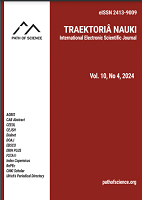Biogas and Biofertilizer From Waste: A Review
Biogas and Biofertilizer From Waste: A Review
Author(s): Al-Amin Shafa Abdulkarim, Jibril Mohammed, Kabir Abogunde Abdulyekeen, Olumide Olu Olubajo, Surajudeen AbdulsalamSubject(s): Business Economy / Management, Energy and Environmental Studies, Environmental interactions
Published by: Altezoro, s. r. o. & Dialog
Keywords: Anaerobic digestion; Biogas; Bio-fertilizer; Animal waste; Plant waste; Agricultural waste; Sewage sludge;
Summary/Abstract: Bio-resources, particularly non-fossil biogenic materials, offer sustainable energy production, waste management, and soil enrichment solutions. Biogas technology, leveraging anaerobic digestion (AD), transforms diverse organic wastes into methane, an eco-friendly energy source. This review highlights the potential of bio-fertilizer and biogas production from various waste types, including animal, plant, sewage sludge, and agricultural residues. Animal waste, mainly cow dung and poultry droppings, is an effective substrate for biogas production, with co-digestion methods enhancing yield and efficiency. It also revealed that blending poultry droppings with banana peels or cow manure with delignified spent coffee grounds optimizes the carbon-to-nitrogen ratio, improving biogas and bio-fertilizer yields. Plant waste, such as water hyacinth and Ulva sp. seaweed, also shows promise when co-digested with animal waste. The review further noted that adding biochar to plant waste significantly enhances biogas production and improves the nutritional value of spent slurry, making it suitable as a bio-fertilizer. Chemical pretreatments of agricultural residues like wheat straw further ensured increased biogas yield and improved the biomethane production kinetic. This review observed that sewage sludge from wastewater treatment plants significantly boosts biogas production, particularly when co-digested with food waste. Adjusting optimal mixing ratios and mechanical mixing techniques enhanced biogas yield and energy potential, while the resulting digestate meets regulatory standards for use as a soil conditioner. This review underscores the economic and environmental benefits of optimizing biogas and bio-fertilizer production, particularly in regions like Nigeria, where such practices can address challenges in electricity generation, fertilizer costs, and waste management.
Journal: Traektoriâ Nauki
- Issue Year: 10/2024
- Issue No: 7
- Page Range: 2008-2016
- Page Count: 9
- Language: English

